Using the Pasig River Ferry Service (PRFS) is a convenient and scenic way to navigate through Metro Manila, offering commuters relief from the city’s notorious traffic jams. With its free rides, multiple stations, and eco-friendly mode of transportation, the PRFS provides an efficient alternative for both daily commuters and leisure travelers alike.
The Pasig River Ferry Service (PRFS) is not only a practical mode of transportation offering commuters a respite from the notorious traffic jams and crowded public transport, but it also offers an opportunity to experience the beauty of the Pasig River and its surrounding urban landscape. Originally established to alleviate traffic congestion and promote sustainable travel options, the PRFS offers commuters a unique way to traverse through the heart of the city.
With its multiple stations and eco-friendly mode of transportation, it caters to both daily commuters and leisure travelers alike. Passengers can enjoy the breeze and panoramic views while avoiding the stress of congested roads. Plus, with safety measures in place and a dedicated team ensuring smooth operations, riding the PRFS is a hassle-free experience for all.

Understanding the Pasig River Ferry Service
The PRFS, operated by the Metropolitan Manila Development Authority (MMDA), is the sole water-based transportation system in Metro Manila. This hidden gem traverses the 25-kilometer stretch of the Pasig River from Pinagbuhatan in Pasig City to Escolta in Manila City, covering multiple stops along the way to navigate through the heart of Metro Manila. While commonly referred to as a ferry, the service operates more like a water bus due to its frequent stops and accessibility.
Originally launched in 2007, the PRFS has long become more than a means to address the challenges of modern urban mobility and alleviate traffic congestion while promoting sustainable travel options. In fact, it has evolved into an alternative transportation network designed to revitalize the historic waterway while preserving and showcasing the rich history and cultural heritage of water-based commuting in the Philippines. With its growing popularity and positive reception, the PRFS stands as a testament to the potential for innovative, more efficient, and eco-friendly transportation landscape for Metro Manila.
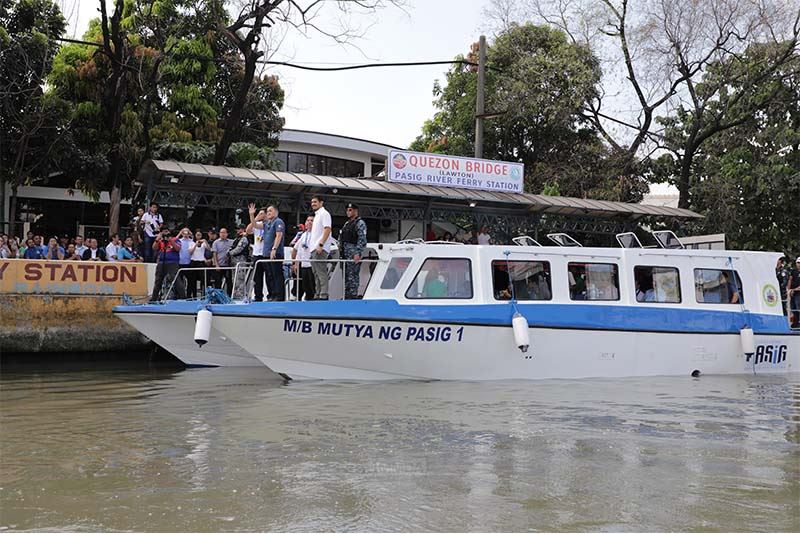
How to Use the Pasig River Ferry Service
Before getting on the ferry and enjoying the services it offers, it’s essential to familiarize yourself with the guidelines, requirements, and procedures.
Guidelines
Here are some things that you will need to remember:
- When at the Station
- Present a valid ID.
- Ensure to wear a face mask.
- Undergo a temperature check.
- Complete the passenger manifest before boarding.
- Children aged 5 and above, accompanied by a guardian, are allowed to ride.
- Maintain physical distancing.
- When on the Ferry Boats
- Avoid rushing when entering and exiting the ferry boats to prevent accidents.
- Wait for the ferry boats to be properly docked before standing up or disembarking.
- Eating, talking, or making phone calls are prohibited.
- Throwing trash into the river is prohibited.
- Smoking is prohibited.
- Taking photos or videos in the area near Malacañang that the ferry passes by is prohibited.
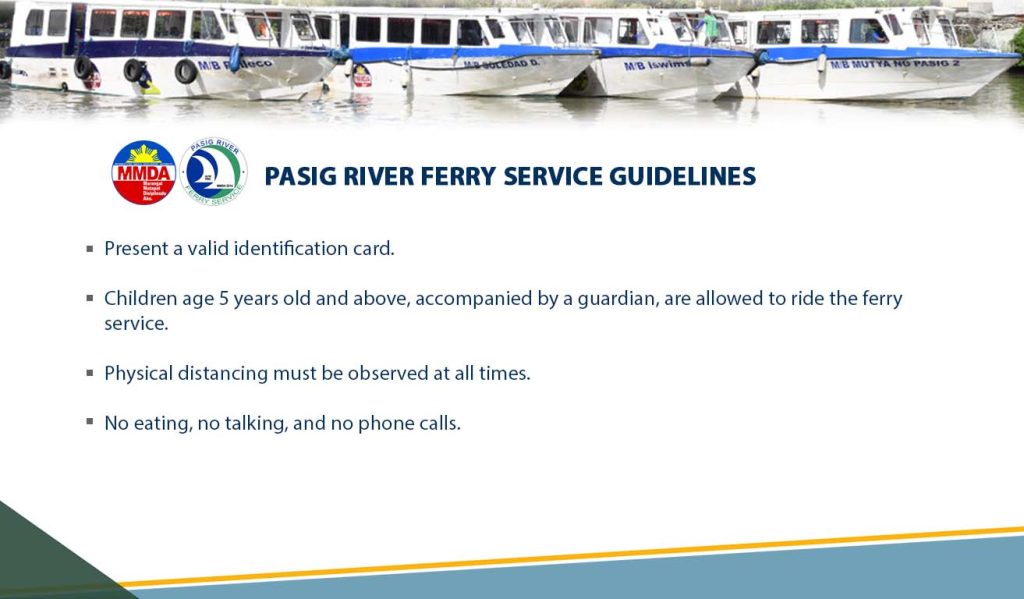
Ferry Boarding Procedures
Whether you’re a daily commuter, a tourist exploring historic sites, or a leisure traveler seeking a unique way to experience Metro Manila, the PRFS invites you to embark on a journey along the iconic Pasig River by following these procedures.
Step 1: Head to the closest Pasig River Ferry Station.
Step 2: Approach the ticket counter and register for the service.
Step 3: Show a valid ID.
Step 4: Fill out the passenger manifest.
Step 5: Have your temperature checked.
Step 6: Board one of the eight non-air-conditioned diesel-powered boats currently in operation and enjoy the trip.
Pasig River Ferry Stations and Routes
The PRFS operates across 13 stations, providing convenient access to various key locations within Metro Manila:
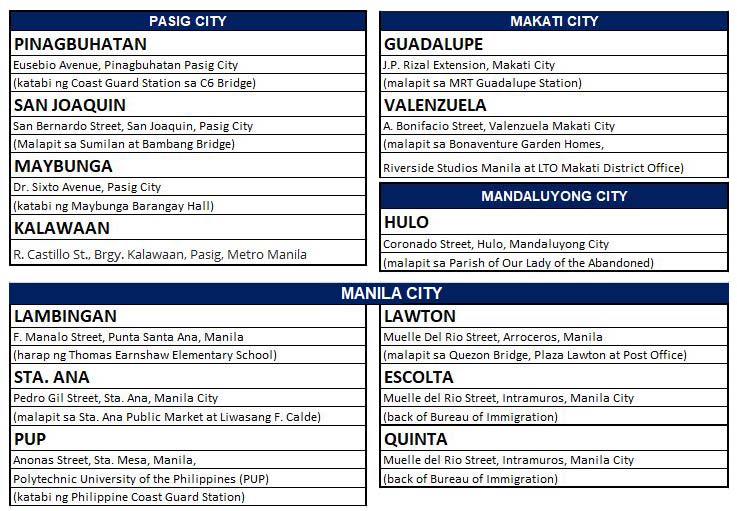
- Pinagbuhatan: Eusebio Avenue, Pinagbuhatan Pasig City
Landmark: Next to Coast Guard Station on C6 Bridge.
- San Joaquin: San Bernardo Street, San Joaquin Pasig City
Landmark: Near Sumilan and Bambang Bridge.
- Maybunga: Dr. Sixto Avenue, Pasig City
Landmark: Next to Maybunga Barangay Hall
- Kalawaan: R. Castillo St. Brgy. Kalawaan Pasig, Metro Manila
- Guadalupe: J.P. Rizal Extension, Makati City
Landmark: Near MRT Guadalupe Station
- Valenzuela: A. Bonifacio Street, Valenzuela Makati City
Landmark: Near Bonaventure Garden Homes, Riverside Studios Manila at LTO Makati District Office
- Hulo: Coronado Street, Hulo, Mandaluyong City
Landmark: Near Parish of our Lady of Abandoned
- Lambingan: F. Manalo Street, Punta Santa Ana, Manila
Landmark: In front of Tomas Earnshaw Elementary School
- Sta. Ana: Pedro Gil Street, Sta. Ana, Manila City
Landmark: Near Sta. Ana Public Market and Liwasang F. Calde
- PUP: Anonas Street, Sta. Mesa, Manila
Landmark: Beside Philippine Coast Guard Station
- Lawton: Muelle Del Rio Street, Arroceros Manila
Landmark: Near Quezon Bridge, Plaza Lawton, and the Post Office
- Escolta: Muelle Del Rio Street, Intramuros, Manila City
Landmark: Behind the Bureau of Immigration
- Quinta: Carlos Palanca St., Quiapo, Manila
Landmark: Behind Quinta Market, near Quiapo Church
Exclusive Trips and Tours
The PRFS also accepts exclusive trips and tours. Interested parties can submit a letter of request to the MMDA, providing details such as the number of passengers, desired date, and contact information.
Schedule
For information on available trip schedules from the different stations, please check this out:
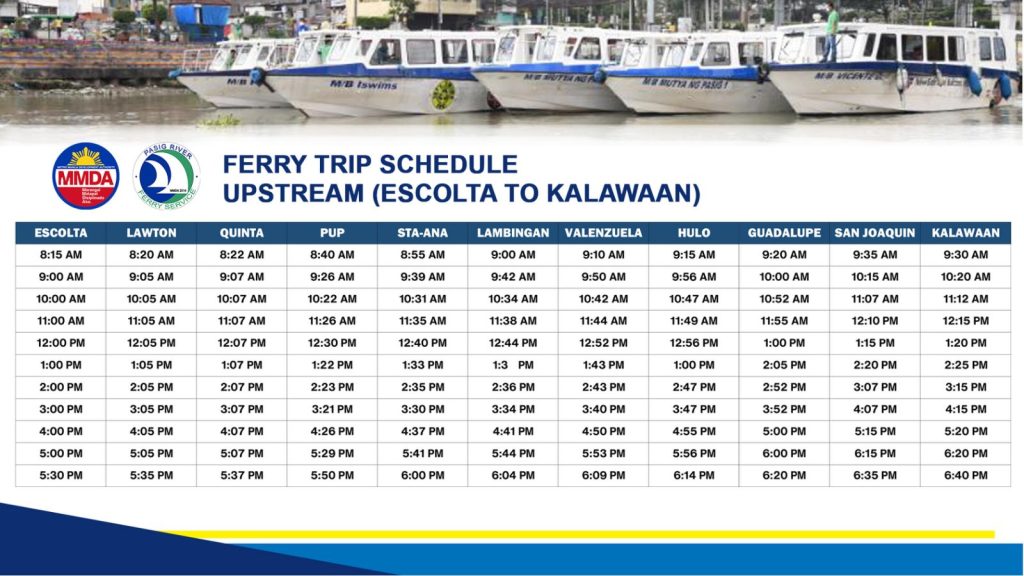
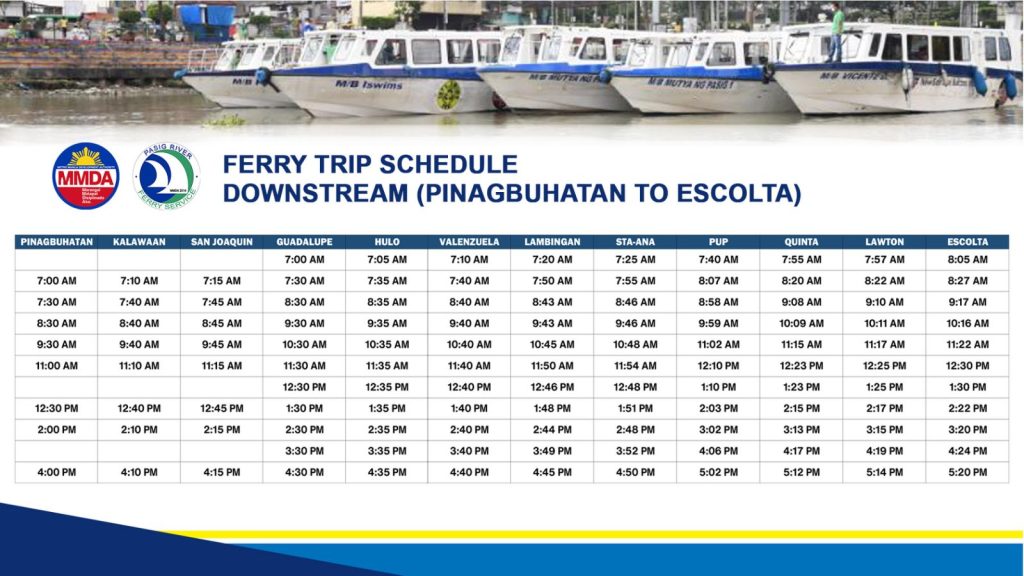
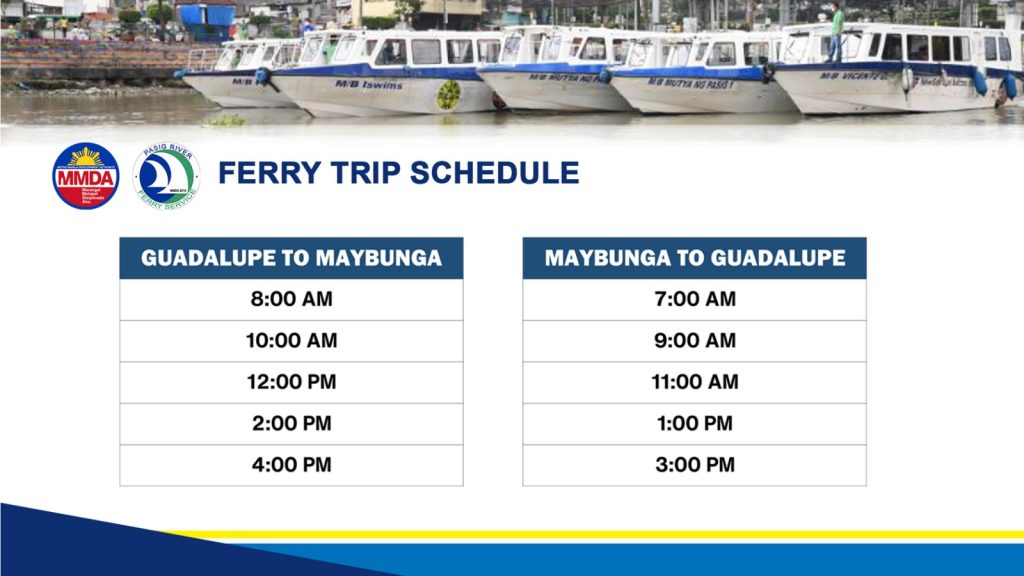
Fares
The PRFS currently offers free rides to passengers, making it an affordable transportation option for commuters in Metro Manila. This initiative aims to provide accessible and sustainable travel alternatives while reducing traffic congestion and promoting environmental conservation.
With no fare required, the ferry service presents an economical and convenient way to navigate through the bustling cityscape along the Pasig River.
Video: Everything You Need to Know About Pasig River Ferry Service
For more information regarding the Pasig River Ferry Service, you may check out this video from Enia Lee:
Additional Reminders
- The ferry operates on a first-come-first-serve basis.
- It follows a schedule usually at hourly intervals, with only a few minutes in between stops.
- Its speed is limited to only three to five knots in restricted areas compared to the top speed of 15 to 17 knots.
- The ferry may also be subject to random checks by the Philippine Coast Guard (PCG) or the Presidential Security Group (PSG), where a K9 unit boards the vessel checking passengers and cargo to make sure that there aren’t any illegal substances aboard.
- Bicycle Policy: Bicycles are permitted on the ferry boats. Passengers with bikes should seek assistance from PRFS staff if needed.
- Capacity: Each ferry boat can only accommodate up to 55 passengers.
- Safety Measures: The PRFS boasts a nine-year incident-free track record and provides life jackets onboard for added safety.
Summary
As the PRFS continues to provide commuters with a convenient and eco-friendly alternative to traditional modes of transportation, it remains a better transport alternative considering the Metro Manila’s urban transport challenges. With its free rides and efficient routes, the PRFS offers a glimpse into a more sustainable future for urban mobility in the Philippines’ capital region. For inquiries, passengers can reach out to the MMDA Pasig River Ferry Service via their Facebook page, the MMDA website, or by calling 8882-4151 loc. 1186.